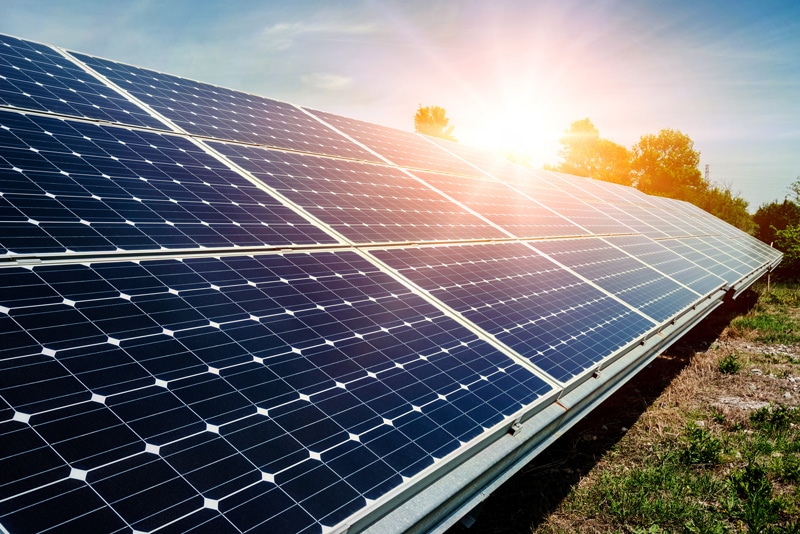The solar energy industry has to date been supported significantly by government incentives for solar power, led by Feed-in Tariffs (FiTs) and tax credits. These incentives have been credited widely with having huge positive impacts in kick-starting the adoption of solar power globally. It has also been clear that whenever the future of these incentives has become uncertain, there have been sizeable market reactions, typically surges in new business before the deadline, and sharp downturns afterwards.
Now that the first wave of solar growth is beginning to foreshadow the second wave, these types of incentives, or their successors, still have a prominent role to play.
Historical Context
To date, government incentives of various types have played a significant part in supporting the rapid growth of solar power worldwide. This was particularly vital in the early days, before the cost of solar energy could compete on level terms with traditional, established energy sources. Many governments saw the need to move to cleaner and more sustainable energy sources, but it became clear that market awareness education and financial incentives were required to ‘prime the pump’ for solar energy market.
As a result, a number of leading governments established a variety of incentives to encourage:
- Utility-scale solar projects
- Business installations of solar photovoltaic (PV) systems
- Residential PV installations
These incentives took the form of:
- Tax credits – most notably, the Solar Investment Tax Credit (ITC) in the United States
- Feed-in Tariffs (FiTs) – agreed rates for utilities to purchase power from power generators
- Regional grants – offering, for example, access to loans and subsidies for solar installations
Of these, the Solar Investment Tax Credit and FiTs have been particularly significant in driving strong growth in solar power adoption.
Solar Investment Tax Credit Impacts on Solar Power Growth
Since its introduction in 2006, the solar Investment Tax Credit (ITC) has proved to be instrumental in supporting the deployment and growth of solar energy in the United States. In a nutshell, the ITC currently offers a 30 percent tax credit towards the investment cost of solar systems installed on residential and commercial properties.
This rate will be stepped down, to 26 percent in 2020 and 22 percent in 2021. After 2021, the ITC rate for residential solar installations will drop to zero while the commercial and utility ITC credit will drop to 10 percent, where it is currently set to remain, as the following figure shows.
The ITC is credited with helping the rate of annual solar installations in the U.S. grow by over 1,600 percent since the ITC was implemented in 2006 – a compound annual growth rate of 76 percent.
Feed-in Tariff Impacts on Solar Power Growth
FiTs have also been credited with helping drive strong growth, notably in China, the U.S. Japan, the UK and Germany. However, it is anticipated that the Chinese solar energy market will shrink between 2018 and 2020 to a level of 20-30 GW due to FIT cuts. (On the plus side, the Chinese market is projected to resume rapid growth at an even higher rate in from 2021, due to the China’s determination to lead in the development of clean energy, not least as an important lever for alleviating poverty.)
Meanwhile in Europe, the UK government discontinued its generous FiT at the end of 2015, which observers are saying is the primary cause of the 74% drop in UK solar installations in 2016 and the major contributor to the 21% in the European market in 2016. Industry predictions suggest that the UK’s place in the European solar rankings will fall significantly over the next few years as a result of this policy decision by the UK government.
The Rise of Solar Power Tenders
The new trend is for governments to introduce energy tenders to bring down on more solar energy at the lowest costs, typically for systems over a certain level of power generation. This is taking place in Europe, where the established solar markets are now using tenders to control deployment of ground-mounted solar energy systems.
Meanwhile, Japan is making moves to replace its uncapped FiT with a tender scheme for systems larger than 2 MW in 2017. Likewise, India has introduced solar energy tenders in order to boost solar power demand at the lowest cost possible.
Forward View for Government Incentives Impact on Solar Power Growth
In December 2016, China reduced the FiT for utility scale plants by between 13-19%, (with different tariffs paid in 3 different regions – from the sun-rich northwest to the sun-poor east coast), while leaving the existing distributed solar FiT unchanged. These adjustments are designed to incentivize market segmentation towards distributed generation, which is strong growth is projected to hit 5 GW in 2017. In addition, broader government priorities in China have an important role to play. One significant example is poverty alleviation – a major priority for the Chinese government.
Solar power is widely known as the ideal means to bring electricity to rural areas. For that reason, the Chinese government has set a target of 5.5 GW of new solar energy generation specifically for poverty alleviation in 2017. One promising solar energy application in this regard is “PV+”, which essentially means the use of PV panels not just for solar power generation, but also to leverage solar structures to gain powerful secondary benefits.
For example, in China, crops, flowers and herbs that prefer shady environments are now being planted underneath solar power plants to maximize the use of the solar installation and the land. For that reason, “PV + agriculture” is becoming a trending tag in China. Turning our attention to the United States, the 2015 extension of the solar ITC is expected to encourage further reductions in solar prices at the same time as continued growth in installation rates and further technological efficiency gains.
As a result of these trends, the cumulative total of solar energy installed in the US is expected to reach nearly 100 GW by the end of 2020. Even more welcome to many is the anticipation that the number of Americans employed in solar energy jobs is expected to double to 420,000 in the same time period. In combination, estimates are that this will add approximately $140 billion to the U.S. economy.
Japan revised its FiTs in April 2017, decreasing tariffs for systems under 2 MW. Projects above that level will be tendered from now on. Due to this and other factors (chiefly, government preference for nuclear and coal-generated energy, PV development and grid connection difficulties and sluggish energy market reform), the anticipation is that the Japanese market will continue to contract to around 7.5 GW in 2017.
Meanwhile in Europe, Germany is expected to become Europe’s largest solar market by 2021. The rest of the top five places are projected to be France, Turkey, the Netherlands and Italy.
As for the UK, the UK government incentives which had fueled its top spot in the European solar sector from 2014 to 2016. However, its drastic drop in solar installation volume after those incentives were terminated, will take the UK out of the top five in Europe for the foreseeable future.
On a global level, continuing government incentives can still have a role to play in enabling the next wave of solar power growth, via:
- Solar and Storage – led by countries like German and Australia, and in the U.S., California
- Corporates Going Green by Sourcing Solar Power
In addition to the analyses of each country or region above, there is a high degree of interdependency within the global solar market, due to the global nature of the supply chain. Therefore, the following considerations need to be borne in mind:
- China on its own added 45% of the total global solar capacity in 2016.
- The three largest markets – China, the U.S. and Japan – accounted for 75% of all new solar power installations in 2016.
- The solar markets in all three of these nations are dependent to varying degrees on government incentives, notably FiTS and investment tax credits.
Given the substantial impact these incentives have on solar markets at this stage of the industry growth and maturity curve, the solar industry in any of these countries, and the global industry itself would very likely be severely endangered if any of these governments were to radically reduce or remove their existing incentives.
In a similar vein, European governments will need to take heed of the fate of the UK solar energy industry suffering its dramatic fall after the UK government terminated its incentive program. Europe has a bright solar power future ahead of it if it continues with progressive growth policies. One such move is the use of energy contract tenders, which have been embraced by several European countries as the next evolutionary step from uncapped FiT incentives. Early adopters in tendering include Germany, France, Spain and Turkey.
The expert view is that ultimately, distributed solar will grow from strength to strength. To encourage this, governments in established markets are beginning to adjust their incentives accordingly. The next big wave in solar power growth is expected to be driven by consumers who embrace ‘solar and storage’ as the means to control and reduce their electricity bills. Just as in the first wave of solar growth, the right kinds of government incentives have an important early role to play in this next chapter.
Key references for this article:
- Solar Investment Tax Credit (ITC) – Solar Energy Industries Association
- UK solar power installations plummet after government cuts
Bildquellen
- PV Anlage: Diyana Dimitrova | shutterstock.com



